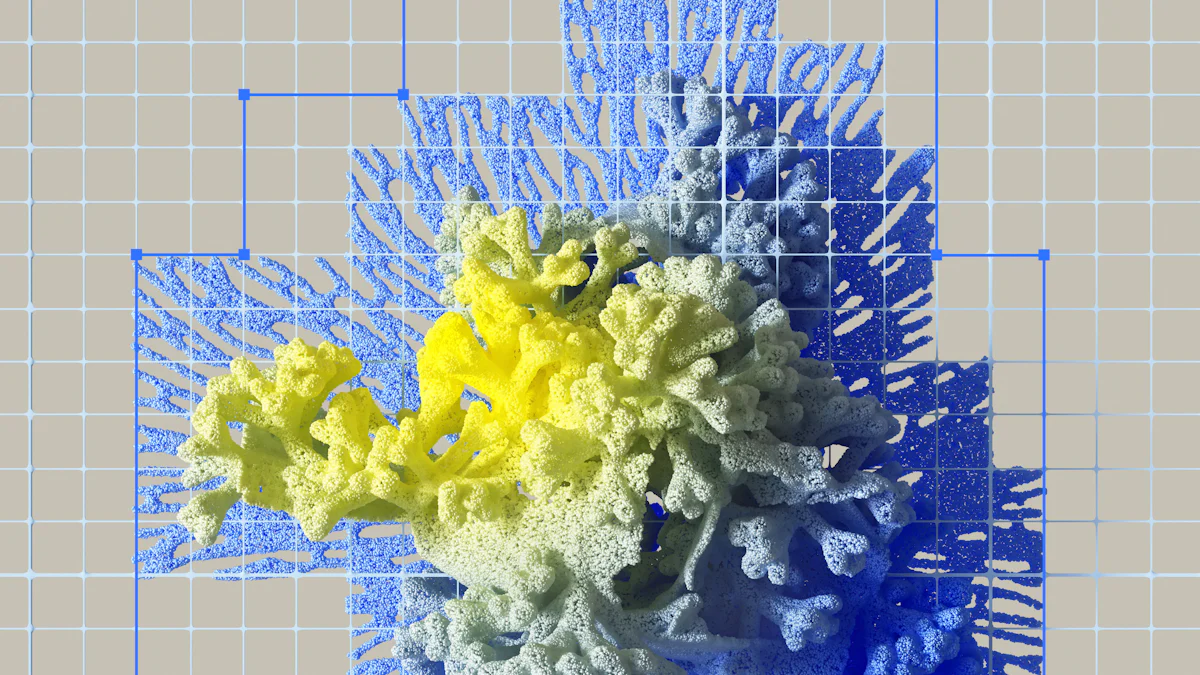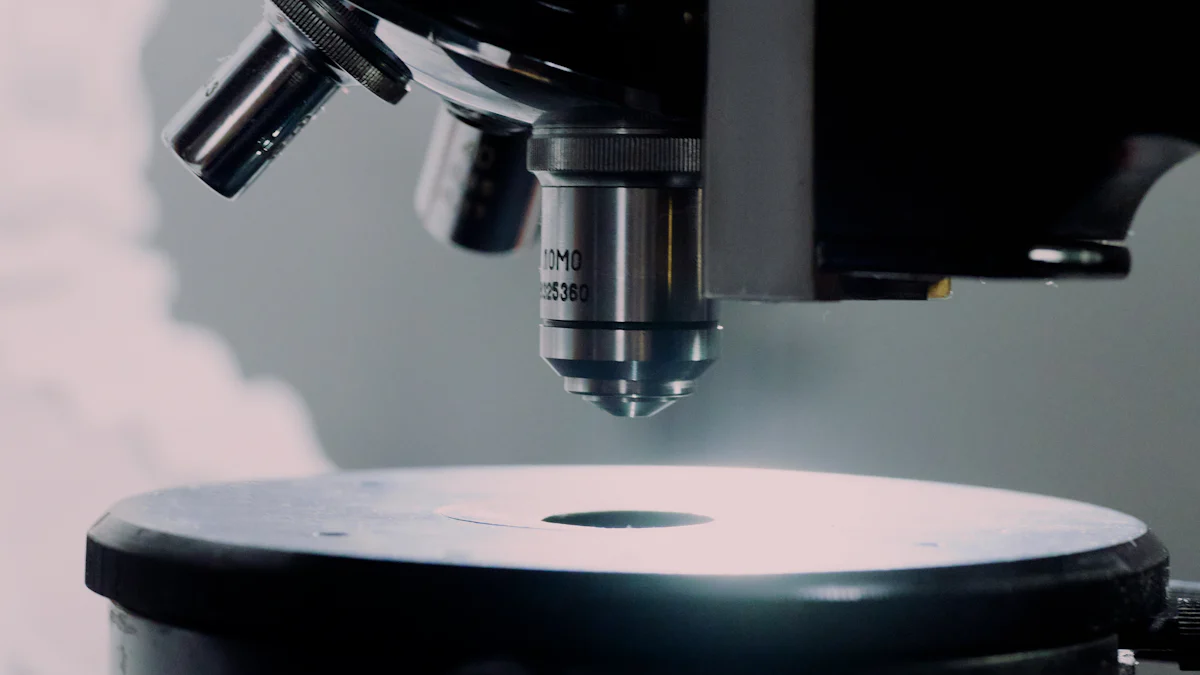Learn Bio-Inspired Artificial Intelligence with These Resources
Bio-inspired artificial intelligence (AI) draws inspiration from nature to solve complex problems with remarkable efficiency. By mimicking biological systems, it has transformed industries like healthcare, robotics, and creative technologies. Researchers have developed bio-inspired models for tasks such as noise reduction, image processing, and health monitoring using bio-signals. These advancements not only enhance accuracy but also reduce energy consumption and costs. The integration of biology and AI continues to revolutionize fields like biotechnology and agriculture, creating powerful systems that benefit humanity. AI Bio-inspired Computing represents a future shaped by nature’s genius.
Key Takeaways
Bio-inspired AI mimics natural processes to solve complex problems, enhancing efficiency and adaptability across various industries.
Learning bio-inspired AI can open up career opportunities in fields like healthcare, robotics, finance, and agriculture, where innovative solutions are in high demand.
Utilize online courses and tutorials from platforms like Coursera and edX to build foundational knowledge in bio-inspired computing techniques.
Engage with open-source tools like DEAP and PySwarm to gain hands-on experience in implementing bio-inspired algorithms effectively.
Participate in online communities such as GitHub and Stack Overflow to collaborate, troubleshoot, and stay updated on the latest advancements in bio-inspired AI.
Start with small projects to reinforce your understanding of bio-inspired algorithms, gradually increasing complexity as you gain confidence.
Networking with professionals in the field can provide mentorship opportunities and insights into cutting-edge applications of bio-inspired AI.
What is Bio-Inspired Artificial Intelligence?

Definition and Key Concepts
Bio-inspired artificial intelligence (AI) takes inspiration from biological systems to create innovative solutions for complex challenges. This approach mirrors natural processes, such as evolution, neural activity, and collective behavior, to design intelligent systems. By studying how nature solves problems, researchers develop algorithms and models that replicate these mechanisms in computing.
Several techniques exemplify the principles of bio-inspired AI. Neural networks, for instance, mimic the structure and function of the human brain to process information and identify patterns. Genetic algorithms simulate the process of natural selection to optimize solutions for specific tasks. Swarm intelligence, inspired by the collective behavior of organisms like ants and bees, enables systems to solve problems through decentralized decision-making. These methods highlight the versatility and adaptability of bio-inspired AI in addressing diverse challenges.
Scientific Research Findings: According to studies, neural networks and genetic algorithms are rooted in biological structures and processes. Genetic algorithms, in particular, rely on evolutionary principles to tackle optimization problems effectively.
Why Learn Bio-Inspired AI?
Bio-inspired AI holds immense potential for solving real-world problems. Its methodologies enhance adaptability, efficiency, and robustness in various applications. For example, bio-inspired computation has been instrumental in developing neuromorphic computing and evolutionary algorithms, which overcome the limitations of traditional computing technologies. These advancements make bio-inspired AI a valuable tool for industries seeking innovative solutions.
The demand for professionals skilled in bio-inspired AI continues to grow across multiple sectors. Healthcare leverages these techniques for drug discovery and medical imaging. Robotics benefits from bio-inspired intelligence to improve adaptability and agility in navigating complex environments. Finance, agriculture, and environmental science also utilize bio-inspired approaches to optimize processes and achieve sustainable outcomes.
Scientific Research Findings: Studies reveal that integrating biologically inspired intelligence into robotics enhances versatility and agility. These traits are essential for navigating unknown environments and adapting to changing conditions.
Learning AI Bio-inspired Computing equips individuals with the knowledge to address pressing challenges in technology and society. By understanding the principles behind these systems, learners can contribute to advancements that align with nature's efficiency and ingenuity.
Top Educational Resources for Learning AI Bio-Inspired Computing
Online Courses
Online courses provide a structured way to learn AI Bio-inspired Computing. Platforms like Coursera, edX, and Udemy offer specialized courses tailored to this field. For instance, the "Bio-Inspired Artificial Intelligence" course by AI2ES introduces learners to evolutionary computation and swarm intelligence. It demonstrates how these techniques solve optimization problems, train data-driven models, and generate innovative solutions. Similarly, the csse-314 course at Rose-Hulman focuses on creating and refining bio-inspired systems, offering hands-on experience with evolutionary algorithms.
Tutorials from Restackio also serve as valuable resources. These tutorials delve into biologically-inspired AI principles, such as neural architecture and learning mechanisms. They help learners understand how nature’s processes integrate into artificial intelligence. These platforms ensure that learners gain both theoretical knowledge and practical skills.
Books
Books remain essential for mastering AI Bio-inspired Computing. Beginner-friendly texts like "Bio-Inspired Artificial Intelligence: Theories, Methods, and Technologies" by Dario Floreano and Claudio Mattiussi provide a comprehensive introduction. This book explores how natural processes inspire innovative solutions in AI. It is part of the Intelligent Robotics and Autonomous Agents series, making it an excellent starting point for newcomers.
For advanced learners, "Swarm Intelligence" by Eric Bonabeau et al. offers deeper insights. This text examines collective behavior in biological systems and its application in computing. It highlights how swarm intelligence solves complex problems through decentralized decision-making. These books cater to different expertise levels, ensuring accessibility for all learners.
Recommendation: Reading these books equips individuals with a strong foundation in bio-inspired theories and methods. They bridge the gap between biological principles and artificial intelligence applications.
Research Papers and Journals
Research papers and journals provide cutting-edge knowledge in AI Bio-inspired Computing. Foundational papers like "Bio-Inspired Artificial Intelligence" (PDF) discuss design processes and methodologies. These papers explain how biological systems inspire computational models, offering valuable insights for researchers and practitioners.
Journals such as "Artificial Life" and "Swarm Intelligence" publish the latest advancements in the field. They cover topics ranging from evolutionary computation to biologically-inspired robotics. Subscribing to these journals keeps learners updated on emerging trends and innovations.
Scientific Insight: Journals and research papers highlight real-world applications of bio-inspired AI. They showcase how these techniques address challenges in industries like healthcare, robotics, and environmental science.
Open-Source Tools and Platforms
Libraries like DEAP and PySwarm for implementing bio-inspired algorithms.
Open-source libraries play a crucial role in advancing AI Bio-inspired Computing. DEAP (Distributed Evolutionary Algorithms in Python) provides a flexible framework for implementing evolutionary algorithms. It simplifies the process of creating and testing bio-inspired models, making it an excellent choice for both beginners and experts. DEAP supports various evolutionary techniques, including genetic algorithms and particle swarm optimization, which mimic natural processes to solve complex problems.
Another valuable tool is PySwarm, a Python-based library designed for swarm intelligence algorithms. PySwarm enables users to implement optimization techniques inspired by the collective behavior of organisms like ants and bees. Its intuitive interface allows developers to experiment with algorithms such as Particle Swarm Optimization (PSO) and Ant Colony Optimization (ACO). These tools empower learners and professionals to explore bio-inspired methods without the need for extensive coding expertise.
Pro Tip: Combining DEAP and PySwarm can enhance the development of hybrid models. This approach leverages the strengths of multiple bio-inspired techniques to achieve superior results.
Online communities such as GitHub and Stack Overflow for collaboration and learning.
Online communities provide a collaborative environment for individuals interested in bio-inspired AI. GitHub hosts numerous repositories dedicated to bio-inspired computing projects. Developers can access pre-built models, contribute to open-source initiatives, and share their own implementations. GitHub also fosters innovation by connecting users with a global network of researchers and practitioners.
Stack Overflow serves as a valuable resource for troubleshooting and knowledge exchange. Users can ask questions, share insights, and learn from experienced professionals in the field. The platform covers a wide range of topics, from algorithm design to practical applications of bio-inspired AI. Engaging with these communities accelerates learning and keeps individuals updated on the latest advancements.
Recommendation: Actively participating in GitHub and Stack Overflow discussions enhances problem-solving skills. These platforms also provide opportunities to network with experts and gain feedback on projects.
By utilizing open-source tools like DEAP and PySwarm, along with engaging in online communities, learners can build a strong foundation in AI Bio-inspired Computing. These resources not only simplify the implementation of bio-inspired algorithms but also foster collaboration and innovation within the field.
Applications of AI Bio-Inspired Computing

Robotics
Examples of bio-inspired robots, including insect-like drones and snake robots.
Bio-inspired robotics has introduced groundbreaking innovations by mimicking the movements and behaviors of living organisms. Insect-like drones, for instance, replicate the flight patterns of bees and flies, enabling them to navigate tight spaces and perform tasks like pollination or search-and-rescue missions. Similarly, snake robots emulate the flexibility and movement of real snakes, making them ideal for exploring confined or hazardous environments, such as collapsed buildings or underwater pipelines. These robots demonstrate how biological principles can inspire designs that address real-world challenges.
Notable Example: Researchers have developed snake robots capable of slithering through debris to locate survivors during disaster recovery operations. Their design, inspired by the anatomy of snakes, allows them to move efficiently in complex terrains.
How bio-inspired AI enhances robotic adaptability and efficiency.
AI Bio-inspired Computing plays a pivotal role in enhancing the adaptability and efficiency of robots. By integrating algorithms like swarm intelligence and neural networks, robots can make decentralized decisions and adapt to dynamic environments. For example, swarm intelligence enables groups of robots to collaborate seamlessly, much like ants working together to transport food. Neural networks, on the other hand, allow robots to learn from their surroundings and improve their performance over time. These advancements ensure that robots can operate autonomously and respond effectively to unforeseen challenges.
Pro Insight: Neuromorphic computing, a subset of bio-inspired AI, equips robots with brain-like processing capabilities, enabling faster decision-making and energy-efficient operations.
Optimization and Problem Solving
Use of genetic algorithms in optimization tasks.
Genetic algorithms, inspired by the process of natural selection, have revolutionized optimization tasks. These algorithms iteratively evolve solutions by mimicking biological evolution, selecting the fittest candidates, and combining their traits to produce better outcomes. Industries use genetic algorithms to solve complex problems, such as optimizing supply chain logistics or designing efficient transportation routes. Their ability to explore vast solution spaces makes them invaluable for tackling challenges that traditional methods struggle to address.
Practical Application: Companies have successfully used genetic algorithms to optimize delivery routes, reducing fuel consumption and operational costs while improving delivery times.
Applications in logistics, scheduling, and resource allocation.
Bio-inspired AI techniques excel in logistics, scheduling, and resource allocation by providing adaptive and efficient solutions. Swarm intelligence, for instance, helps optimize warehouse operations by coordinating the movements of autonomous robots. Similarly, genetic algorithms streamline scheduling processes, ensuring that resources are allocated effectively to meet deadlines. These methods enhance productivity and minimize waste, making them essential tools for modern industries.
Industry Example: A leading e-commerce company implemented swarm intelligence to manage its warehouse robots, resulting in faster order fulfillment and reduced operational costs.
Healthcare and Medicine
AI-driven drug discovery inspired by biological processes.
Bio-inspired AI has transformed drug discovery by simulating biological processes to identify potential treatments. Algorithms inspired by evolution and natural selection analyze vast datasets to predict the effectiveness of drug compounds. This approach accelerates the discovery process, reducing the time and cost associated with traditional methods. Researchers also use bio-inspired models to simulate protein folding, a critical step in understanding diseases and developing targeted therapies.
Scientific Breakthrough: AI-driven drug discovery recently identified promising compounds for treating rare diseases, showcasing the potential of bio-inspired approaches in advancing medical research.
Applications in medical imaging and diagnostics.
In medical imaging and diagnostics, bio-inspired AI enhances accuracy and efficiency. Neural networks, modeled after the human brain, analyze medical images to detect anomalies such as tumors or fractures. These systems learn from vast datasets, improving their diagnostic capabilities over time. Additionally, swarm intelligence aids in processing large volumes of patient data, enabling faster and more accurate diagnoses. These innovations improve patient outcomes and support healthcare professionals in delivering high-quality care.
Healthcare Impact: Hospitals now use bio-inspired AI systems to analyze X-rays and MRIs, significantly reducing diagnostic errors and enabling early detection of life-threatening conditions.
Other Industries
Use cases in finance, agriculture, and environmental science
Bio-inspired artificial intelligence has found significant applications across diverse industries, including finance, agriculture, and environmental science. In finance, algorithms inspired by biological processes optimize trading strategies and risk management. Genetic algorithms, for instance, analyze market trends and predict stock movements, enabling financial institutions to make data-driven decisions. Swarm intelligence also enhances portfolio optimization by simulating collective decision-making, ensuring balanced and efficient asset allocation.
In agriculture, bio-inspired AI improves crop management and resource utilization. Neural networks analyze soil conditions, weather patterns, and crop health to recommend optimal planting schedules and irrigation strategies. These systems help farmers maximize yields while minimizing resource wastage. Swarm intelligence further supports precision agriculture by coordinating autonomous drones for tasks like pest control and crop monitoring.
Environmental science benefits from bio-inspired AI through its ability to address complex ecological challenges. Evolutionary algorithms model ecosystem dynamics, aiding in biodiversity conservation and habitat restoration. Swarm intelligence facilitates the deployment of robotic swarms for environmental monitoring, such as tracking pollution levels or mapping endangered species' habitats. These applications demonstrate how bio-inspired AI contributes to sustainable development and environmental preservation.
Real-World Impact: A leading agricultural company implemented neural networks to monitor crop health, resulting in a 20% increase in yield and a significant reduction in water usage.
Emerging trends and future possibilities in bio-inspired AI
The field of bio-inspired AI continues to evolve, with emerging trends shaping its future potential. Neuromorphic computing, which mimics the structure and function of the human brain, is gaining traction. This technology promises energy-efficient processing and faster decision-making, making it ideal for applications in robotics and autonomous systems. Tools like DEAP and PySwarm play a pivotal role in advancing these innovations by providing frameworks for implementing evolutionary and swarm intelligence algorithms.
Synthetic biology is another promising area, where bio-inspired AI integrates with biological systems to create hybrid solutions. Researchers are exploring the use of AI-driven synthetic cells for drug delivery and environmental remediation. These advancements blur the lines between biology and technology, opening new possibilities for innovation.
The integration of bio-inspired AI with other technologies, such as quantum computing and the Internet of Things (IoT), is also on the horizon. Quantum computing could enhance the efficiency of bio-inspired algorithms, solving problems that are currently computationally infeasible. IoT devices, powered by bio-inspired AI, could enable smarter and more adaptive systems in industries ranging from healthcare to urban planning.
Future Outlook: Experts predict that the convergence of bio-inspired AI with emerging technologies will revolutionize industries, driving innovation and addressing global challenges with unprecedented efficiency.
How to Get Started with Bio-Inspired AI
Building a Strong Foundation
A solid foundation is essential for mastering AI Bio-inspired Computing. Beginners should start by acquiring basic programming skills in languages like Python, which is widely used for implementing bio-inspired algorithms. Familiarity with machine learning fundamentals, such as supervised and unsupervised learning, is equally important. These concepts provide the groundwork for understanding how biological principles translate into computational models.
Free online courses and tutorials offer an excellent starting point. Platforms like Coursera and edX provide beginner-friendly courses that introduce bio-inspired techniques. For instance, introductory tutorials on neural networks and genetic algorithms help learners grasp the basics without overwhelming them. These resources ensure that even those new to artificial intelligence can begin their journey with confidence.
Pro Tip: Start with small projects, such as creating a simple neural network or implementing a basic genetic algorithm. These hands-on exercises reinforce theoretical knowledge and build practical skills.
Hands-On Practice
Practical experience is crucial for mastering bio-inspired AI. Implementing simple algorithms, such as genetic algorithms or neural networks, allows learners to see how biological processes inspire computational solutions. For example, genetic algorithms mimic natural selection to solve optimization problems, while neural networks replicate the human brain's structure to process data.
Participating in online challenges and competitions accelerates learning. Platforms like Kaggle and AI hackathons provide opportunities to apply bio-inspired techniques to real-world problems. These events often feature tasks like optimizing logistics or designing adaptive robotic systems. Engaging in such activities not only sharpens technical skills but also fosters creativity and problem-solving abilities.
Real-World Example: The BlueSwarm project, which developed fish-shaped robots for deep-sea exploration, showcases how bio-inspired algorithms can solve complex challenges. Learners can draw inspiration from such projects to create their own innovative solutions.
Joining the Community
Engaging with the bio-inspired AI community enhances learning and keeps individuals updated on the latest advancements. Online forums, such as Reddit's AI subreddits, and discussion groups on platforms like LinkedIn provide spaces for exchanging ideas and seeking advice. Conferences and webinars also offer valuable opportunities to learn from experts and discover emerging trends.
Networking with professionals and researchers opens doors to collaboration and mentorship. For instance, connecting with developers working on projects like robotic hummingbirds or rat-like robots can provide insights into cutting-edge applications. These interactions help learners stay motivated and informed about the evolving landscape of bio-inspired AI.
Recommendation: Join GitHub repositories focused on bio-inspired computing. Contributing to open-source projects not only builds technical expertise but also fosters connections with like-minded individuals.
By building a strong foundation, gaining hands-on experience, and joining the community, learners can embark on a rewarding journey in AI Bio-inspired Computing. These steps empower individuals to explore the field's potential and contribute to innovations that address real-world challenges.
Bio-inspired AI stands as a transformative force, reshaping industries like robotics, healthcare, and agriculture. By mimicking biological systems, it offers sustainable solutions, such as energy-efficient algorithms and advanced health monitoring technologies. The resources outlined in this blog provide a solid foundation for learners and professionals to explore AI Bio-inspired Computing. These tools empower individuals to innovate and address complex challenges with nature-inspired ingenuity. Begin your journey today and unlock the potential of bio-inspired intelligence to create impactful solutions for a better future.
See Also
Leading Figures Shaping The Global Intelligent Control Sector
Three Key Innovators Transforming The Huizhou Zhongkai Area
Uncovering Breakthroughs Within The Zhongkai High-Tech Zone
The Role Of Huizhou Zhongkai In Industry Advancement
Investigating Zhongkai High-Tech Zone As An Innovation Center
Zhongkai High tech Zone National foreign trade transformation and Upgradi Base(Electronic Information)Cloud Platform.
Address: Zhongkai High-tech Zone,Huizhou City ,Guangdong,China
E-mail: huizhoueii@163.com 13510001271@163.com
Tel: +86-0752-3279220 Mobile: +86-13510001271


